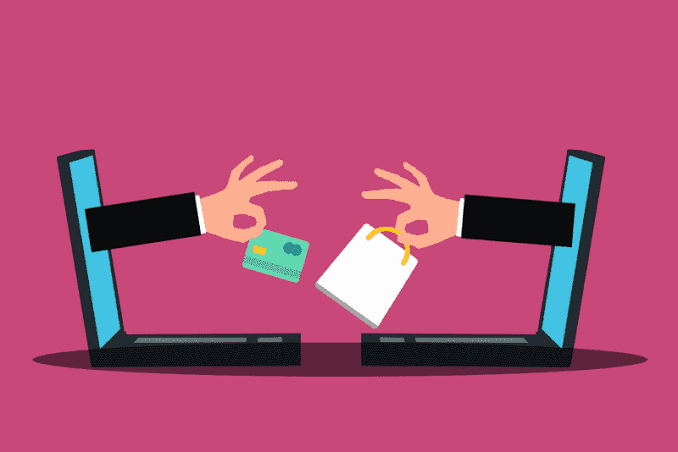Non-fungible tokens (NFTs) have gained significant traction in the past couple of years and now everyone’s talking about them as the future of ownership and tokenisation especially as the adoption keeps growing.
However, one of the issues plaguing the nascent sector, and is often not spoken about enough is wash trading.
Chainalysis, a blockchain research firm, published its Crypto Crime Report for 2022 earlier in the year and among many other findings, the report stated that the NFT market is quite vulnerable to the wash trading concept.
What is wash trading? How does it happen and how can you spot one? In this explainer, I will share all the details that you need to know.
Let’s get to it.
Wash Trading Explained
Basically, wash trading is a process in which a trader buys and sells an asset solely for the purpose of giving fake or misleading information to the market. Although this may include a third party, this often involves a single trader acting as both the buyer and the seller.
In the NFT space, it is the process of making one’s NFT appear more valuable than it really is by “selling it” to a new wallet that the original owner also controls. Note that this is easy with NFTs, as many NFT trading platforms allow users to trade by simply connecting their wallet to the platform, with no need for KYC verification.
Here is a simple way to understand it: Afolayan buys an NFT for 0.5ETH. But he wants to make it look like it is a rare and expensive digital artwork so he creates another MetaMask wallet and “sells” it (to himself ) for 5ETH.
The same item, the same person but a higher price!
Remember that NFT sales happen on-chain, and the data is recorded and it is publicly verifiable. Anyone who checks the NFT going forward will now see that it was bought for 0.5ETH and then sold for 5ETH, making it look more expensive than it actually is.
Unsuspecting collectors will then decide to bid more than the 5ETH price believing that the NFT piece is worth more when in reality, Afolayan artificially inflated its price by selling it to himself in the first place.


Better, here is a more relatable scenario.
Imagine a WhatsApp vendor that buys an item she sells from herself for a ridiculously high amount and posts a bank receipt of the fake transaction on her WhatsApp status. This will make it seem like she’s making huge sales in order for prospective customers to buy the same goods at higher prices.
She sells a shoe worth $700 to herself for $4,900 and posts the transfer receipt on her status. This way, other prospective buyers will think that the shoe is worth more than $4,900 and be willing to pay more.
That is the idea!
An instance of NFT Wash Trading
One of the biggest examples of wash trading involves CryptoPunk.
Popularized by Larva Labs, CryptoPunks is a collection of 10,000 unique and pixelated artworks built on the Ethereum blockchain. They are so popular that a few of them rank high in the list of most expensive NFTs ever sold.
Related post: Here is a list of the top 5 most expensive NFTs in history
However, with the case of CryptoPunk 9998, there seemed to be an evident case of wash trading.
In August 2021, it was purchased by a crypto wallet for around $350,000. On October 28 2021, the same NFT was transferred to a second wallet, before being promptly “sold” for 124,457 ETH (around 532 million USD at that time). According to this interaction, the NFT had increased to more than a thousand times its original value in the space of just 2 months.


But something happened immediately after the final sale: the NFT was transferred again to the original buyer from August and then re-listed for 250,000 ETH.
This shows that the sales and transfers made between August and October were all made by the same entity/person, and the set-up was a ceremonial hoax.
Reasons for wash trading
Smart Contract specializes in recording NFT activity. Every time a token is traded, the activity is recorded by its smart contract, to be displayed to anyone who wishes to check in future. So by continually trading an NFT, they can create the impression that there is demand for that token when, in reality, there is not.
As smart contracts show sales prices, sellers continually trade tokens with their own wallets at an inflated price so they can record misleading information about the market value of that asset in its transaction history.
They do all these purchases to create the illusion of hype and artificial demand for a specific asset. When a prospective buyer comes along, they will be deceived to pay a high amount thinking they’ve bought a valuable asset not knowing it is an average, overpriced NFT.
Read also: NFTs in Africa, the future and the challenges
How to protect yourself
Some experts think that platforms and NFT marketplaces should implement software to prevent or reduce wash trading. Whatever the case is, here are steps NFT lovers can take not to fall victim.
Here are some:
- Before purchasing an NFT, it is important to look at past trades like analysts did for CryptoPunk 9998. You can always look at the past transactions of the NFT and if the same wallet address has purchased the token more than once, it may be a wash trading scheme.
- Blockchain explorer tools like Etherscan come in handy in this aspect because they enable you to search the transaction history of tokens and wallets via public blockchain data. Here, you can see both the sending and receiving addresses for every transaction, and establish for yourself whether self-funding has taken place.
- Also, if it’s too good to be true, it probably is not. The purpose of these wash trading schemes is to create hype around a specific NFT. In light of that, before throwing a significant amount of dollars on a piece of digital art, make sure that you’re not blinded by the hype surrounding it.
Remember to take a step back, do your own analysis and research and think about the purchase.






